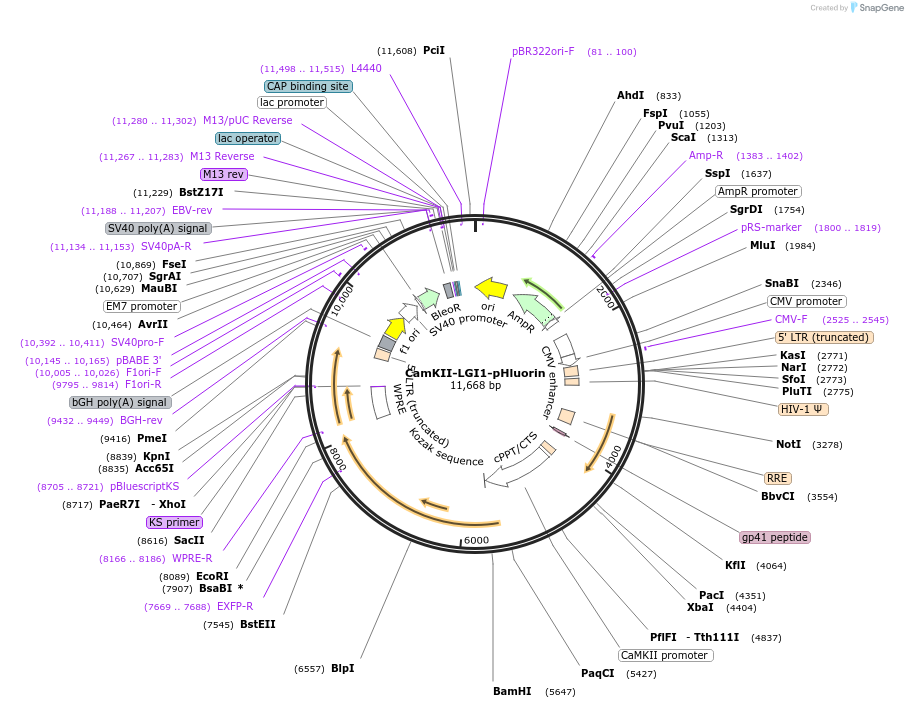CamKII-LGI1-pHluorin
(Plasmid
#185537)
-
PurposeExpresses LGI1-pHluorin under the CamKII promoter
-
Depositing Lab
-
Sequence Information
Ordering
| Item | Catalog # | Description | Quantity | Price (USD) | |
|---|---|---|---|---|---|
| Plasmid | 185537 | Standard format: Plasmid sent in bacteria as agar stab | 1 | $89 | |
Backbone
-
Vector backboneCamKII
- Total vector size (bp) 11669
-
Vector typeMammalian Expression, Lentiviral
Growth in Bacteria
-
Bacterial Resistance(s)Ampicillin, 100 μg/mL
-
Growth Temperature37°C
-
Growth Strain(s)NEB Stable
-
Copy numberHigh Copy
Gene/Insert
-
Gene/Insert nameLGI1
-
Alt nameLeucine-rich glioma-inactivated protein 1
-
SpeciesR. norvegicus (rat)
-
Entrez GeneLgi1
- Promoter CamKII
-
Tag
/ Fusion Protein
- pHluorin (C terminal on insert)
Cloning Information
- Cloning method Restriction Enzyme
- 5′ cloning site BamHI (not destroyed)
- 3′ cloning site EcoRI (not destroyed)
- 5′ sequencing primer agtattgtgtatataaggc
- (Common Sequencing Primers)
Resource Information
-
Supplemental Documents
Terms and Licenses
-
Academic/Nonprofit Terms
-
Industry Terms
- Not Available to Industry
Trademarks:
- Zeocin® is an InvivoGen trademark.
Depositor Comments
Please visit https://www.biorxiv.org/content/10.1101/2022.07.03.498586v2 for bioRxiv preprint.
These plasmids were created by your colleagues. Please acknowledge the Principal Investigator, cite the article in which the plasmids were described, and include Addgene in the Materials and Methods of your future publications.
-
For your Materials & Methods section:
CamKII-LGI1-pHluorin was a gift from Jaime de Juan-Sanz (Addgene plasmid # 185537 ; http://n2t.net/addgene:185537 ; RRID:Addgene_185537) -
For your References section:
Activity-driven synaptic translocation of LGI1 controls excitatory neurotransmission. Cuhadar U, Calzado-Reyes L, Pascual-Caro C, Aberra AS, Ritzau-Jost A, Aggarwal A, Ibata K, Podgorski K, Yuzaki M, Geis C, Hallerman S, Hoppa MB, de Juan-Sanz J. Cell Rep. 2024 May 28;43(5):114186. doi: 10.1016/j.celrep.2024.114186. Epub 2024 May 2. 10.1016/j.celrep.2024.114186 PubMed 38700985



